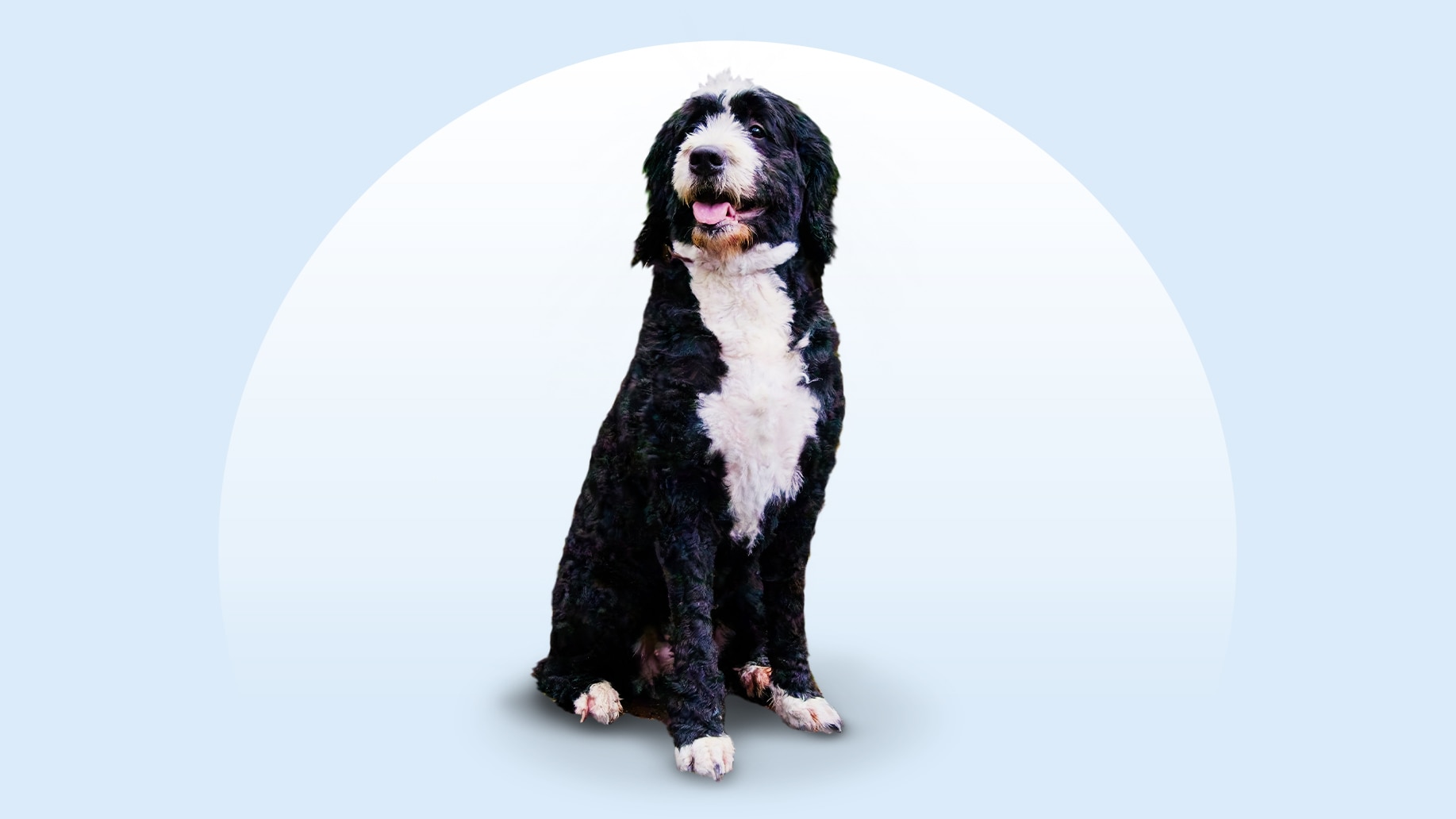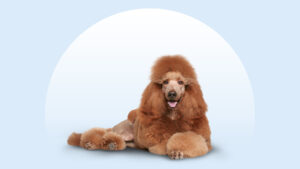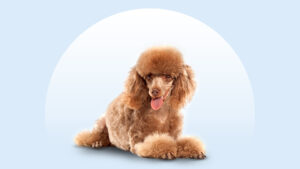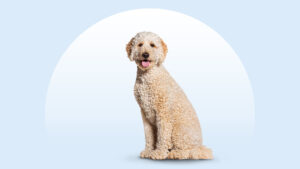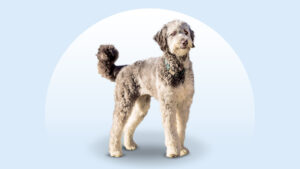Bernedoodle
Updated December 15, 2025
Bernedoodle
Updated December 15, 2025
What is a Bernedoodle? A best friend who’s a social butterfly, a brainiac, and a snuggle buddy all rolled into one curly-coated pup. Bernedoodles—whether toy, mini, or standard size—are adaptable dogs who thrive with exercise regimens, grooming care, and doting attention from pet parents.
Friendly, Smarty Pants, Playful
Toy Bernedoodle: Under 20 pounds
Miniature Bernedoodle: 20–45 pounds
Standard Bernedoodle: 46–100 pounds
Toy Bernedoodle: 12–17 inches
Miniature Bernedoodle: 18–22 inches
Standard Bernedoodle: 23–29 inches
12–18 years
Black, Tan, White, Brown, Gray, Apricot
As a cross between a Bernese Mountain Dog and a Toy Poodle, Miniature Poodle, or Standard Poodle, Bernedoodles are known for their friendly, intelligent, and playful nature. Like their Poodle parent, Bernedoodles come in three different sizes, from under 20 to more than 100 pounds.
Bernedoodles love being the center of attention, so prepare to meet new people when you’re out and about with your pup. With smarts from their Poodle side, Bernedoodle dogs love to learn tricks and thrive when given mental challenges (stock up on puzzles and games!).
Many are low-shedding dogs, but this isn’t a guarantee. While Poodles have a reputation for being “hypoallergenic” pups (though there’s really no such thing), Bernese Mountain Dogs are heavy shedders. There’s no way to tell which coat a Bernedoodle puppy will inherit.
Bernedoodle Characteristics
Bernedoodle Appearance
Bernedoodles often boast a tricolor coat of black, white, and brown. But solid or bicolor variations also exist, thanks to their Poodle genes. Their wavy or curly fur gives them a teddy bear–like appearance, and their expressive eyes and floppy ears add to their charm.

- Ears
Bernedoodles have floppy ears that rest snugly against their head.
- Eyes
Bernedoodles’ eyes are expressive, round or almond-shaped, and typically brown or blue in color.
- Nose
They have a rounded and broad nose that’s black or brown.
- Coat Length
A Bernedoodle’s coat is typically medium to long, and either wavy or curly.
- Coat Color
Bernedoodles typically boast a tricolor bicolor, or solid coat. It’s common for them to be black, white, and brown, but their Poodle heritage also allows for white, gray, or apricot colors.
- Tail
Their tail is long, often plume-like, and carried high or slightly curled when they are frolicking around.
Bernedoodle Temperament
A Bernedoodle personality is the ultimate mix of affection, playfulness, and smarts—perfectly blending the loyalty of the Bernese Mountain Dog with the cleverness of the Poodle. These lovable dogs thrive on attention and will happily become your new best friend, as they are eager to please and always ready for fun.
Calling a Bernedoodle “friendly” doesn’t do this dog justice. Bernedoodles are social butterflies. They adore kids, making them excellent family pets, and they’re equally affectionate toward dogs, cats, and other animals alike.
Their easygoing nature means they fit in well with almost any pack, whether it’s a busy household or a quieter home. Just remember: Bernedoodles, like all dogs, do best with lots of socialization so they are happy, confident, and well-adjusted in any situation.
Outgoing Bernedoodles thrive on interaction, whether it’s a game of fetch, a cuddle session, or a walk around the neighborhood. But don’t leave them alone for too long—they might feel a little sad if left behind for extended periods. (Crate training and interactive toys can help keep separation anxiety at bay!)
While not traditionally “working” dogs, Bernedoodles are highly trainable and can excel in all kinds of roles. They make fantastic therapy and emotional support dogs, offering comfort and companionship to those who need it. And thanks to their quick minds and boundless energy, they love canine sports and activities like agility and obedience.
How to Care for a Bernedoodle
A Bernedoodle might look more like a stuffed animal than a dog, but these athletic pups still need regular exercise, mental stimulation, and consistent grooming.
Grooming
Training
Diet
Exercise
Environment
Bernedoodle Health
The average Bernedoodle lifespan is 12–18 years, though this largely depends on your Bernedoodle’s size. Because small dogs live longer than large dogs, toy Bernedoodles live closer to the 18-year mark, while Standard Bernedoodles might reach 12 years old.
Toy, Miniature, and Standard Bernedoodles may face different health challenges, too, so it’s essential to talk to your breeder and vet to know what to expect.
When working with a Bernedoodle breeder, ask for a complete health history of your puppy and their parents, if possible. Reputable breeders should be able to provide you with vaccinations, health screenings, and family medical records.
Some common health concerns for Bernedoodles are:
- Hip and elbow dysplasia: Bernedoodles can inherit hip and elbow dysplasia, conditions where the joints develop abnormally, cause pain, and potentially lead to arthritis. Maintaining a healthy weight can reduce stress on the joints, and treatment may require medications, supplements, or surgery.
- Progressive retinal atrophy (PRA): This genetic eye condition causes gradual vision loss, often beginning with night blindness. Symptoms include clumsiness, dilated pupils, cataracts, and difficulty seeing in low light. While there’s no cure, Bernedoodles with PRA can still live fulfilling lives with proper care.
- Allergies: Although Bernedoodles are often considered hypoallergenic, they can experience allergies to food or environmental factors. Symptoms include itching, rashes, recurring ear infections, and hair loss. A veterinarian can help diagnose and treat allergies effectively.
- Gastric dilatation-volvulus (GDV): Bernese Mountain Dogs and Standard Poodles both have deep chests, making them susceptible to life-threatening GDV. This puts Standard Bernedoodles at risk as well. Symptoms include restlessness, retching, a distended abdomen, and excessive drooling. GDV is a medical emergency—take your dog to an emergency vet immediately if you notice symptoms.
Bernedoodle History
Bernedoodles are a relatively new hybrid breed created in 2003 by breeder Sherry Rupke of Swissridge Kennels. This designer dog combines the loyal, gentle nature of the Bernese Mountain Dog with the intelligence and hypoallergenic coat of the Poodle. The goal was to create a companion with the best traits of both breeds.
Unlike the parent breeds, Bernedoodles were not developed for work. Instead, they were bred to be affectionate, family-friendly pets. Their adaptability, charm, and lower-shedding coats quickly made them popular among dog-lovers, particularly those with allergies.
The Bernedoodle is not officially recognized by the American Kennel Club (AKC). However, it is recognized by organizations like the Designer Breed Registry (DBR).
Today, Bernedoodles are widely sought, and their popularity continues to grow due to their versatility and loving nature. They can be found through reputable breeders who specialize in this hybrid, and it’s essential to choose breeders who prioritize health screenings and ethical breeding practices.
The cost of a Bernedoodle puppy can range from $2,500–$5,000 or more, depending on size, coat type, color, and breeder reputation. Miniature and Toy varieties, as well as those with rare coat patterns, often have higher price tags. Bernedoodles are also occasionally available for adoption through rescue organizations specializing in Poodle mixes or Bernese Mountain Dog hybrids.
For those looking to add a loyal, intelligent, and playful companion to their family, the Bernedoodle offers a unique blend of qualities from its parent breeds.
